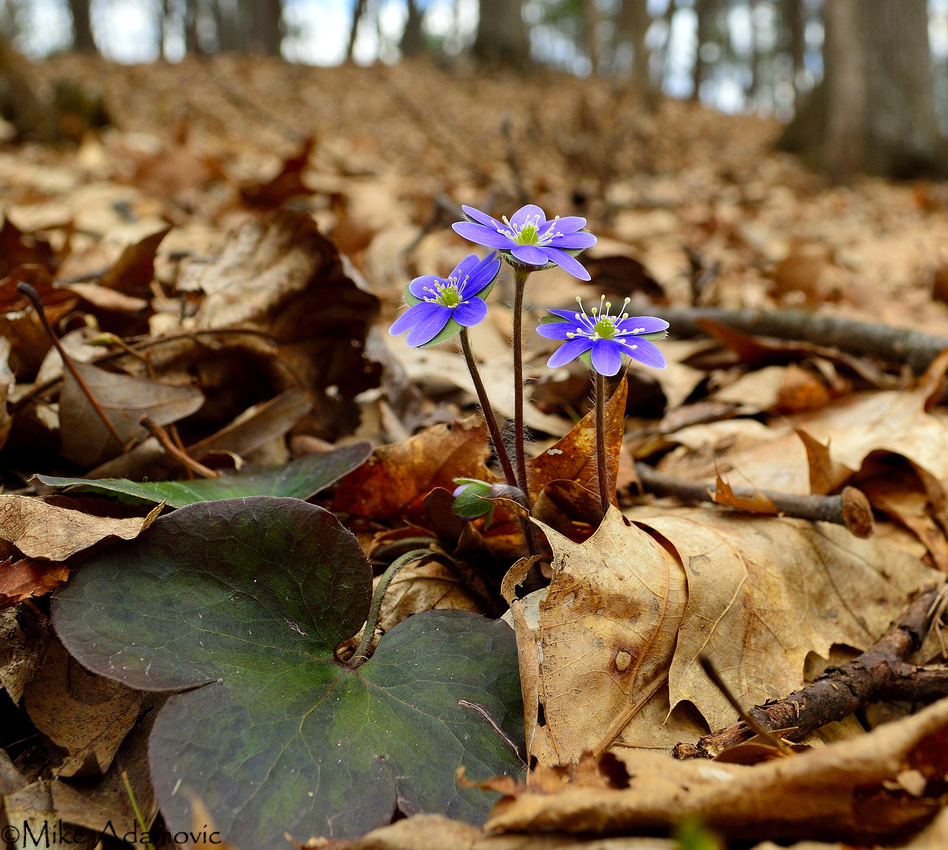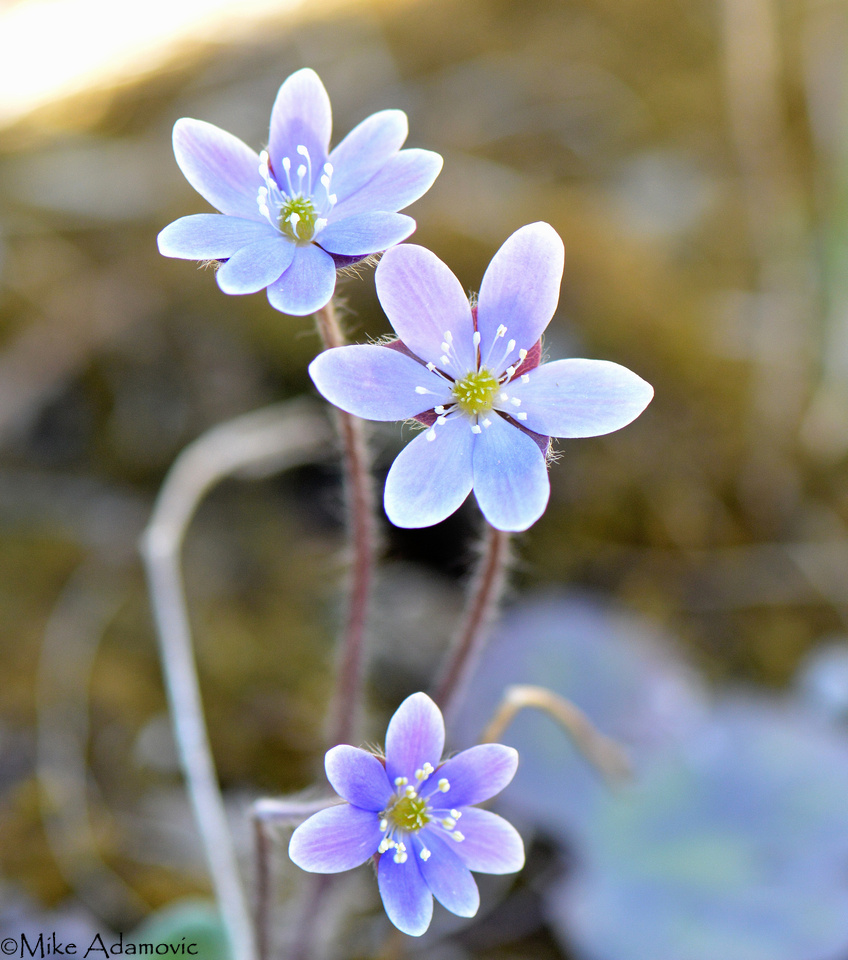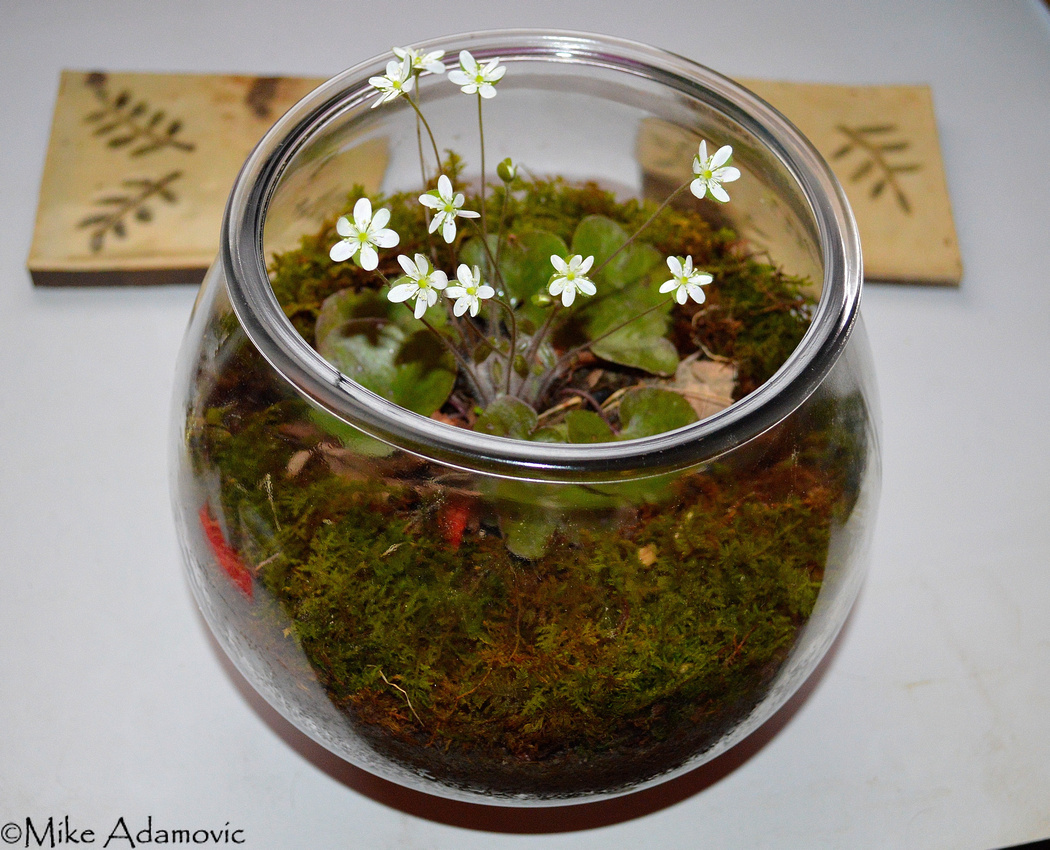Spring's First Wildflower: Hepatica


To those weary of winter the first bit of relief can be found sprouting amid heaps of decaying leaves at the end of March or the beginning of April. Hepatica, one of the earliest arriving wildflowers and harbinger of the spring season, emerges from bleak forest floors to decorate the surroundings with vivid arrays of pastel purple, lavender, pink, and white. It's an exotic departure from the monotonous hues of winter that have heavily dominated the landscape for months. Though somewhat small, these flowers pack a rather large punch and remind us that renewal is close at hand.
"When at the maturity of its charms, it is certainly the gem of the woods," the naturalist John Burroughs once admiringly wrote. To him, its colorful and delicate features were "enough to hold and arrest the dullest eye." Hepatica with all its refined beauty and lively charms certainly does supersede the flowers of the smelly and unappealing skunk cabbage, whose tiny and concealed blossoms are technically the first of the year to appear, driven to an exceedingly early start by this species ability to generate heat, a process known as thermogenesis, and is literally able to melt its way out of the snow. Notwithstanding this unique trait, "the plebian skunk cabbage...ought scarcely to be reckoned among true flowers," according to Neltje Blanchan, an early 20th Century wildflower expert.


Hepatica has its own defense against the cold and erratic weather of the early spring season. Each bud and stem is coated with a fine layering of white hair that functions as what one author has described as a "fur overcoat." Apart from retaining residual heat, this fuzz creates a barrier that keeps ice from forming on the plant. What's more, its leathery leaves are imbued with antifreeze-like properties that enable it to photosynthesize all year long. These evergreen leaves allow hepatica to sequester additional energy which will later be utilized to gain a head-start in the first days of spring. Unlike hepatica, many spring ephemerals do not possess the necessary reserves to blossom so early, as they quickly wither down to the rootstock after flowering and setting seed, ultimately hibernating until the following season. They are therefore slower to produce flowers, needing to accumulate resources as they go, rather than by prudently securing them ahead of time as hepatica does.
The chilly conditions of early spring sometimes pose another problem to hepatica. A seasonal low abundance of pollinating insects frequently results in lonely flowers devoid of any beneficial visitation. Plants, luckily, have the ability to self-fertilize if necessary. While not as useful as cross-pollination, this strategy ensures an adequate quantity of seeds is still produced. Each tiny seed comes packaged with a nutrient and lipid rich appendage called an elaiosome. This structure encourages insects, primarily ants, to scatter the seeds to a new location. Once the seeds have been transported back to the colony, the elaiosome is promptly excised and the seed body discarded in waste pits, usually a fair distance from the parent plant. This strategy is not unique to hepatica; many other spring ephemerals utilize this or similar techniques to colonize new locales by use an ant host, a tactic called myrmecochory.


Two forms of hepatica exist in the U.S., differentiated primarily by leaf shape. Blunt-lobed hepatica (Hepatica nobilis var. obtusa) has rounded, or blunt leaves, while those of the sharp-lobed variety (Hepatica nobilis var. acuta) come to a point at the tip. Apart from physical characteristics, habitat preferences contrast as well. The blunt-lobed form typically inhabits forested upland environments with acid soils; sharp-lobed is found more often in moist lowlands, containing richer and more neutral soil. Hepatica ranges all along the east coast and up into Canada, continuing westward to the states just beyond the Mississippi. These two varieties, or subspecies, were once considered to be distinct species, but over the years taxonomists have revised their opinions, deciding that these differences aren't substantial enough to warrant a completely separate classification.
It is difficult to pin down where a particular color form might reside. Some forests contain plants all bearing an identical hue; others possess numerous shades and varying levels of intermixing and may have plants growing side by side sporting vastly different colors. Some observation has gone into attempting to discover the root of these various color morphs. Research by the Torrey Botanical Club documented that brighter colors are likelier to arise in the blunt-lobed type, and that white flowers are more closely associated with its counterpart. Comments made by John Burroughs confirm this observation. After examining "hundreds of specimens" of sharp-lobed hepatica, he notes that "the white ones...were largely in the ascendant."
In terms of scent, reports are somewhat more conflicting. Burroughs was perplexed by how some flowers exuded a rich odor while others were more demure and scentless, and how it all varied from year to year. One season after a harsh winter nearly all the flowers he came across possessed a "most delicious perfume." Other seasons, however, proved considerably bland, and scented individuals were more irregular in distribution. He believed that white flowers of "both varieties" occurred to be sweet scented most often. Remarks in an 1885 edition of Vicks Monthly Magazine, on the other hand, indicated that blunt-lobed hepatica was more odiferous, though this was noted only in relation to those "transplanted into gardens." It seems that this is a mystery that still needs unraveling.


The unusual etymology of this species comes about from its leaves resembling the lobed outline and sometimes color of a liver, and is derived from the Greek word for the organ, hepatikos. It has also been called liverwort and liverleaf. Under the doctrine of signatures, an outdated belief that a plant's physical appearance was a sign for its usefulness in treating correlating human body parts, hepatica plants were steadily employed as a cure to fix an ailing liver or hepatic system.
One report from a 19th Century review of drugs and medicines startlingly details the voracious level of hepatica leaf consumption for medicinal tonics and home remedies. The author reports that in 1883 "one state alone... supplied more than 30,000 pounds." When American suppliers could no longer meet the overwhelming demand, German sources were eagerly sought (similar subspecies grow throughout much of Europe). In the same year it was estimated that "an aggregate of more than 450,000 pounds was imported and gathered for our home market" and that "the demand is still on the increase." Not surprisingly, collection led to the plant "becoming scarce over some sections of our country." This trend continues today, although over the years hepatica has rebounded significantly more than the similarly exploited American ginseng, which was also, and still is, hunted to near extinction. Hepatica, by contrast, is little used today for anything more than decorating the occasional garden.
Though hepatica was soon discovered to be as "utterly unmedicinal as the grass of the field," this is one plant whose presence at the conclusion of winter is surely able to uplift the spirits at least. Spotting one of hepatica's dainty flowers rear its colorfully proud head to the cheery light of a warm spring day easily infuses us with the "tonic of wildness," deemed by Thoreau to be so necessary to our continued well-being.


Comments
Jeff
http://www.printradiant.com | http://www.printlinkage.com | http://www.hitsticker.com | http://www.stickermac.com